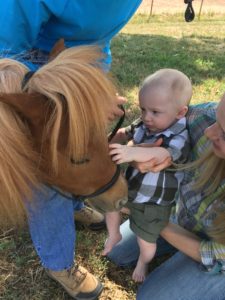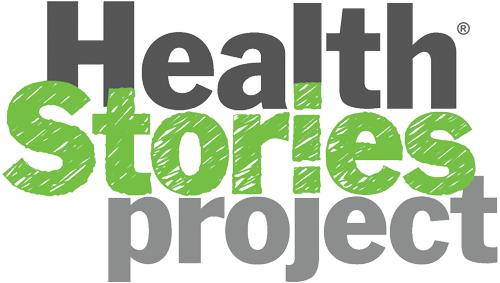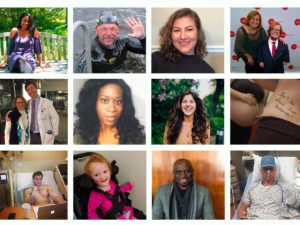People that have spent their lives around horses get it. There’s something almost magical about being in the presence of these amazing creatures. It’s calming, even sustaining for some. “I call it my vitamin H,” says Janneli Dart, a long-time volunteer at the Colorado Therapeutic Riding Center (CTRC).



“See that girl over there? See how she’s moving and interacting with the people around her? I want you to watch how she changes when she gets on a horse.”
I’m speaking with Amy Sedig, a speech language therapist who works at the center. She’s referring to a girl in her early teens who is lying on the floor, and appears disengaged with her grandmother and the volunteer who are trying to get her ready for her therapy session.
A few minutes later, we’re inside the riding area and this same girl is mounted on a horse, accompanied by three volunteers who help ensure her safety and lead the horse while Amy focuses on conducting therapy.
The difference is striking. As she comes around the perimeter, nearing a viewing window, the girl gives her grandmother a little wave and a smile. It may not seem that unusual for most kids, but the fact that she acknowledged someone’s presence and made eye contact is clearly a big deal for her. Her grandmother is blown away and says that this is the first time she’s waved to her.
Magic in the Motion
So what is it about being on a horse that helps facilitate therapy? It all starts with the way the horse walks. The natural three-dimensional movement mimics a typical human gait, which creates a gentle rhythmic movement for the rider. This helps improve the rider’s overall balance, strength, muscle control and tone, as well as motor development and coordination.
CRTC offers two distinct programs at its facility: therapeutic riding and hippotherapy.
Each of these therapies takes advantage of the benefits of that movement, but they are quite different in who conducts them, how they’re structured, and who they’re for.
Therapeutic Riding
Therapeutic riding focuses more on traditional riding and horsemanship as a vehicle for stimulating physical, mental, and emotional growth.
This form of therapy is taught by an instructor certified by PATH, the Professional Association of Therapeutic Horsemanship, and may be conducted in either a group or individual setting.
It’s structured around teaching the riders to control their horse through activities that encourage the development of cognitive, physical, and social skills.
Some riders need a little less instruction, while still benefitting from the therapy. Peggy Hunnicutt has been breeding horses for most of her life, but stopped riding around 20 years ago when she had hip replacement surgery. In 2013, Peggy’s daughter asked her what she would like for her birthday. Her response: to ride again.
She began riding therapy sessions a few months later and began noticing the benefits almost immediately. “My walking is better and so is getting in and out of the car. Even breathing is easier,” she says. For a horse person like Peggy, the healing goes beyond improvements to her posture and movement.
“I’m alive again,” she explains.
Hippotherapy
Based on the Greek word for horse, Hippotherapy refers to the use of horses to faciliate therapeutic or rehabilitative treatment. It doesn’t focus on riding skills so much as using the horse as a dynamic base to facilitate non-static postural control.
In other words, it requires the person on the horse to manage their body’s position on a platform that is constantly changing. This fosters improved trunk mobility and strength which in turn, affects overall limb function.
Hippotherapy sessions are conducted by a licensed physical, occupational or speech and language therapist who is certified by the American Hippotherapy Association (AHA) and PATH International.
“The movement helps align and engage all of their different systems so they’re working together,” explains Amy. “The body is constantly receiving feedback, setting them up for success.”
“There’s no other way I’d rather do therapy, but that’s not to say it’s the right therapy for every kid. It’s part of a child’s whole treatment plan and it’s important to coordinate with other therapists, teachers, and of course, the parents,” she says.
Good Things, Small Packages
Some of the people who can benefit the most from interacting with horses aren’t able to actually visit a therapeutic riding center. Fortunately, the CTRC Mini Troopers program brings healing to them.
Established in 2006, the program is designed to educate and provide human-animal contact for both children and adults, utilizing a miniature horse and outreach team to engage with special needs populations.
The star of the show is Carmella, who has been specially trained in the Parelli Savvy System, a method focused on allowing horse lovers at all levels and disciplines to achieve:
- Success without force
- Partnership without dominance
- Teamwork without fear
- Willingness without intimidation
- Harmony without coercion



The author’s son meeting Carmella for the first time.
Sue Winthrop leads the outreach team and personally looks after Carmella and her younger protégée, Scarlett. They spend time with clients at CTRC and also make visits to community groups, schools, assisted care facilities, nursing homes, and other locations.
Carmella is even allowed to walk into buildings to meet people where they are, lifting the spirits of those who can’t get out of bed and inspiring others to leave their rooms for the first time in months.
The Trail Ahead
CTRC celebrated its 35th anniversary in 2015 and has come a long way since it was founded by three women in 1980 as the first registered therapeutic riding center in Colorado. Meet a few of their amazing staff members and clients in the video below.
Its continued success depends on strong leadership and the incredible dedication of over 1,000 volunteers who care for the horses, assist with therapy, maintain the facility, and help with special events and fundraising.
You can help support CTRC through a number of giving opportunities. If you’re looking to volunteer at a therapeutic riding center or find out if therapeutic equine-related activities are right for someone you know, look for a PATH International center near you!


I called my name is Laura Brohman and I’ve been suffering from sexual child abuse for my entire life. I’m 60 years old and just want to bond with my horse and get over this mind. I say mind because I don’t know what else to call it it’s scary it hurts and it makes me hurt other people and I don’t want to do that anymore. I don’t know if you can help me I’m just giving it a try. Thank you for your time!